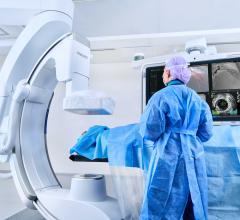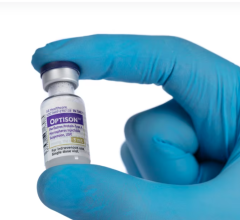May 7, 2009 - The Society of Cardiovascular Computed Tomography (SCCT) said this week a report, “Guidelines for the Performance of Coronary Computed Tomographic Angiography,” will be printed in the May/June issue of the Journal of Cardiovascular Computed Tomography that establishes a consensus of the minimally required standards for appropriate coronary CTA acquisition, as well as recommendations to avoid unnecessarily high radiation exposure.
Coronary CTA uses the technology of multidetector row computed tomography (MDCT), along with contrast agents to noninvasively obtain images of the heart and coronary arteries. Advancements over the past 10 years resulted in the ability to reliably identify and evaluate coronary artery disease (CAD), the No. 1 killer of men and women in the U.S.
Included in the report is the specification that in addition to being clinically competent in cardiac CT, physicians should have adequate knowledge of the ALARA (As Low As Reasonably Achievable) principle from the standpoint of radiation exposure. SCCT said it is critically important for any physician ordering or applying X-rays, which includes CT, to have a fundamental understanding of the risks from radiation and of the measures to minimize exposure to patients.
Specifically, several radiation dose-reduction strategies were included. Tube voltage and current should be adjusted for each individual patient according to their characteristics (radiation risk, weight) and test indication with the lowest settings necessary to achieve good image quality. The scan range (area) should be as short as reasonably possible.
Not every dose-reduction technique is applicable for all patients, SCCT said. Prospective ECG triggering should strongly be considered in patients who have a high radiation risk and in whom diagnostic image quality can be expected. SCCT said this technique produces best results in a cooperative patient with a low and regular heart rate.
“Using the proper technique, coronary CTA can be safely performed in the appropriately selected patient with a relatively low radiation exposure,” said William Guy Weigold, M.D., co-chair of the guidelines committee and director of cardiac CT at Washington Hospital Center. “SCCT seeks to provide physicians with the best information available on safe performance of coronary CTA.”
The report includes the following sections, and gives specific recommendations for each: physician and technologist competencies/institution and scanner standards; patient screening and preparation; patient positioning; contrast injection protocols; coronary CTA acquisition, and image reconstruction and post processing.
Two of the SCCT’s most important objectives are to foster optimal clinical effectiveness of CCTA and ensure its expert and appropriate application. The recommendations set forth in the Guidelines for the Performance of Coronary Computed Tomographic Angiography report will help aid in fulfilling those goals, SCCT said.
As with every procedure, alternative imaging modalities should be considered. Coronary CTA is not always the most appropriate test. The report references the ACC/AHA consensus document for situations where coronary CTA is not appropriate.
The writing group, comprised of seven cardiologists and radiologists, recognizes the highly variable nature of medical cases, and an approach to the acquisition that differs from these guidelines may represent an appropriate variation based on a thorough assessment of an individual patient’s needs.
“We hope all cardiologists, radiologists and technologists involved in the performance and acquisition of coronary CTA will adhere to these guidelines in order to ensure its appropriate application and the highest levels of patient safety possible.” said cardiac imager, Daniel S. Berman, M.D., SCCT president and chief of cardiac imaging at Cedars-Sinai Medical Center. “Following these guidelines will enable this valuable diagnostic tool to serve in the best interest of the patient.”
For more information: www.scct.org


 November 13, 2025
November 13, 2025 









